The leaders of tomorrow are already building with AI-first today. The Baltics have now caught up!
This May, at the iconic House of the Blackheads in Riga—a landmark long associated with trade and commerce—scandiweb hosted the first-ever Baltics AI Meetup dedicated to eCommerce. The energy was high, and the conversations pointed clearly in one direction: AI is becoming the backbone of how forward-thinking companies grow.
The #1 Baltics AI Meetup sold out in advance and brought together a mix of business leaders, marketers, technologists, and AI practitioners who share a common interest in understanding how to move beyond ChatGPT tinkering and start putting AI to work in ways that actually change how businesses operate.
Attendees listened to insights and real examples and participated in open discussions about the potential and the challenges of using AI in business. We looked closely at how companies are already applying AI in eCommerce to streamline workflows and reinvent customer interactions, and what steps are needed to move from theory to practical, lasting impact.
Key takeaways
- AI is becoming the core of how modern companies operate; it’s part of the entire operations, from strategy to execution.
- Answer engine optimization is the next frontier of SEO, helping brands show up inside AI-generated answers.
- Many businesses, including startups and global brands, are already using AI to automate tasks, personalize experiences, and launch campaigns faster.
About Baltics AI
Baltics AI (B/AI) is a meetup series dedicated to helping businesses in the Baltics explore AI in practical ways. Instead of big promises or buzzwords, each session focuses on tools, frameworks, and use cases already working in local companies today.
Who is B/AI for?
- Business leaders & owners looking to learn how others in the region are applying AI
- Innovation leads & product managers exploring how to pilot AI in workflows and scale successful use cases across their teams
- AI-curious professionals eager to cut through the noise, hear real stories, and start experimenting with AI in low-risk, meaningful ways.
During these events, you can expect keynote speakers, real-world showcases, panels, live networking with founders, execs, and AI explorers, and actionable inspiration.
Beyond ChatGPT: real AI transformation
Kicking off the first event, Glebs Vrevsky, co-founder of scandiweb and our AI evangelist, set the tone with a bold but necessary distinction that using AI as a tool is not the same as adopting AI as a way of working.
Most teams today use ChatGPT, Gemini, or other tools to speed up isolated tasks. It’s a productivity boost, like switching from fax to email, but it doesn’t change the underlying process. That’s only the starting point.
Actual AI adoption means putting AI at the heart of how decisions are made, how teams collaborate, and how systems are built. It’s less about speeding up the old way and more about questioning whether the old way is even worth keeping.
This shift is as much cultural as it is operational. It requires new habits, new roles, and a different mindset altogether—one where AI is a core part of how work gets done.
What’s holding companies back from adopting AI?
Next, Antons Sapriko, founder of scandiweb, addressed the question, “If the value of AI is so clear, why aren’t more companies fully embracing it?”
Rather than hype or assumptions, Antons shared grounded insights based on real conversations with clients and partners. The blockers are usually strategic and organizational, not technical.
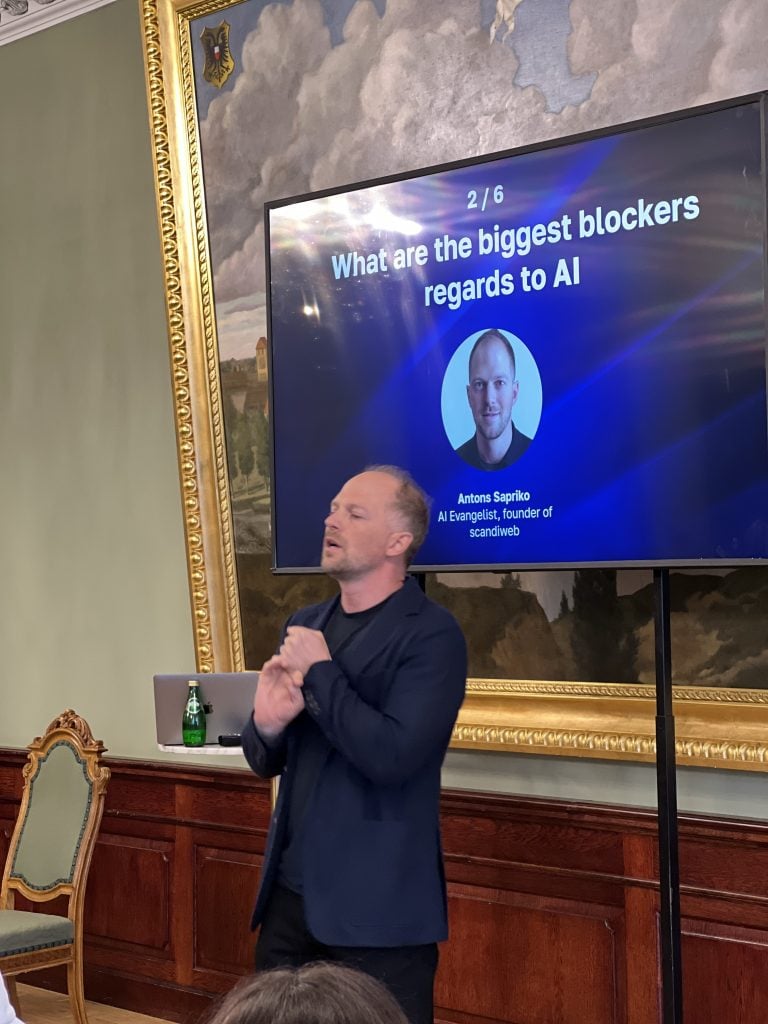
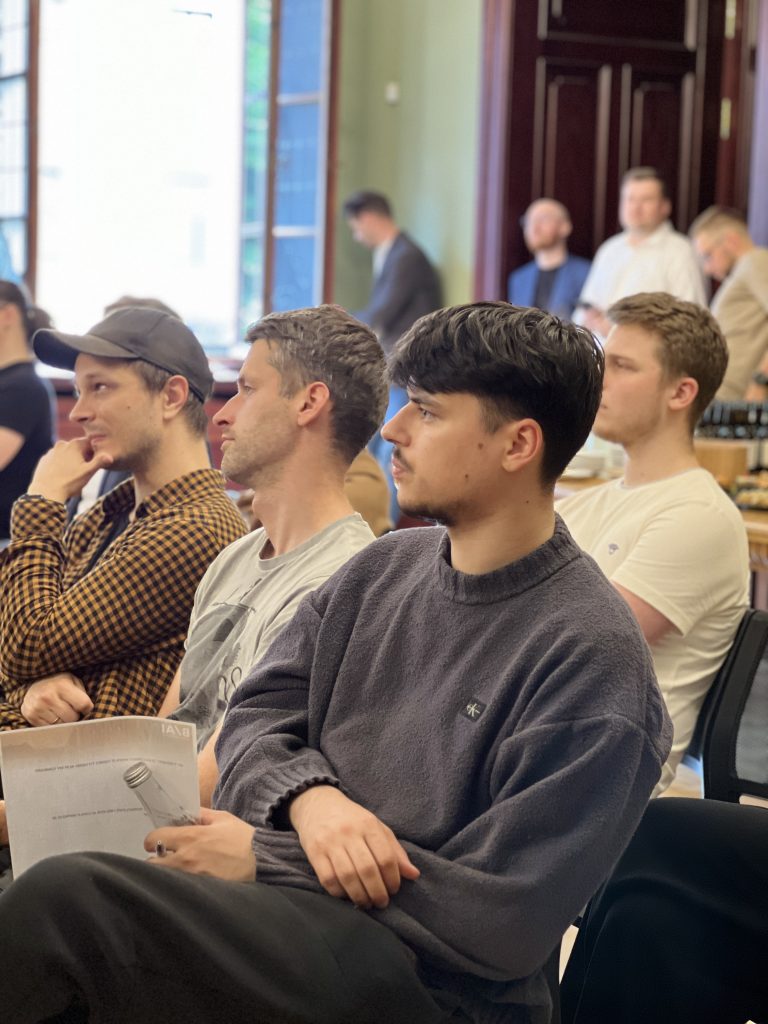
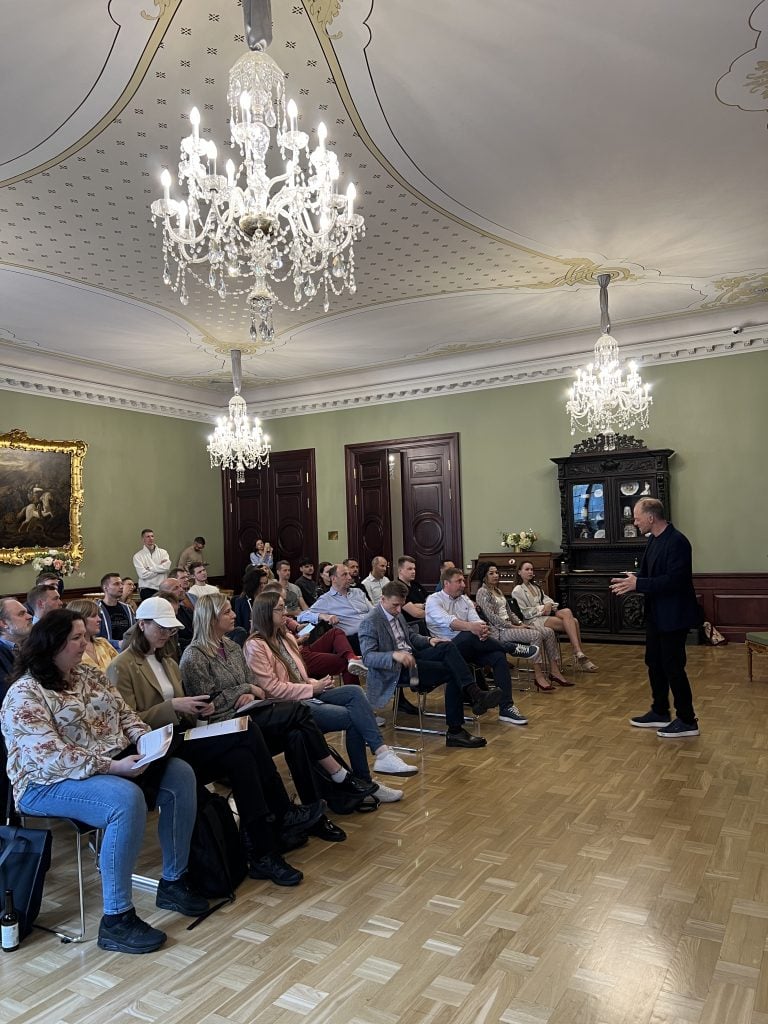
Some of the main challenges
- Fear of the unknown—many teams hesitate to adopt AI due to unclear outcomes or perceived risks
- Lack of clarity—without a clear use case or business goal, AI efforts stay stuck in the experimental phase
- Unstructured or siloed data makes it difficult to train or integrate AI tools effectively
- Overreliance on tools—teams often use AI as a productivity hack, rather than reshaping workflows around it.
For AI adoption to move beyond isolated use cases, companies need to shift how they think about change. This will most likely mean rethinking the tool stack entirely.
Getting discovered by AI via AEO
As AI tools like ChatGPT, Claude, Perplexity, and Google’s AI Overviews become key sources of answers online, traditional SEO is no longer enough. That’s where answer engine optimization (AEO) comes in.
Artyom Jurkevich, co-founder of BetterAnswer.ai, introduced the concept of AEO as a strategic approach to making content AI-readable, AI-quotable, and AI-visible. Traditional SEO and aiming for the highest rankings are being replaced by becoming the answer.
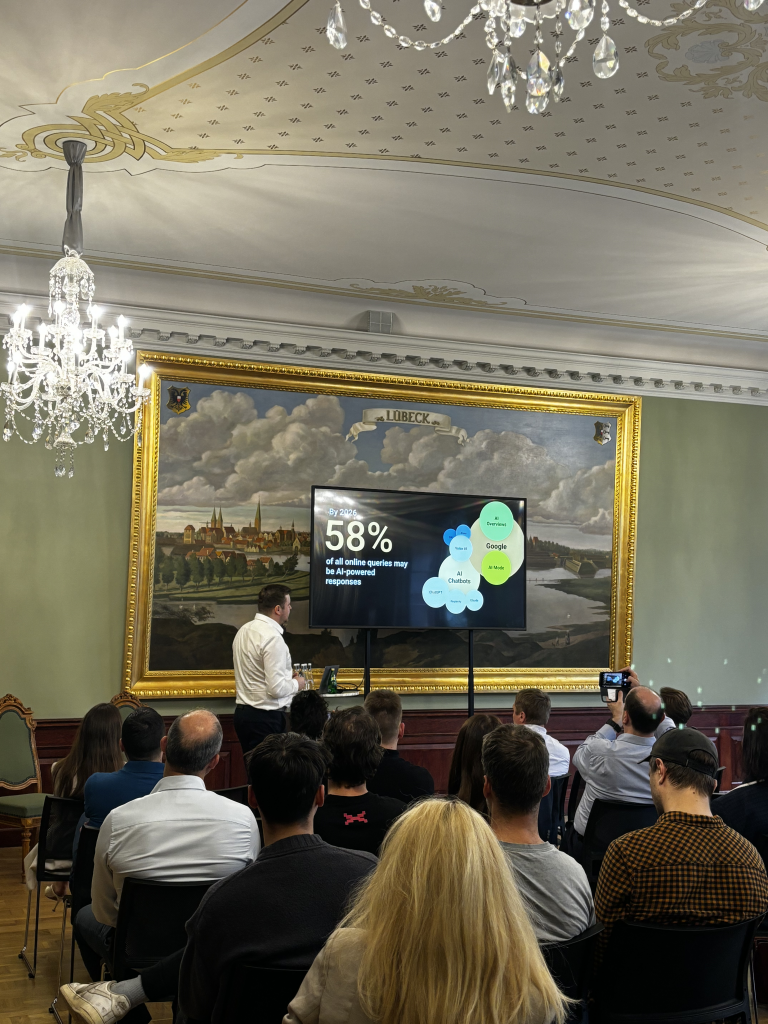
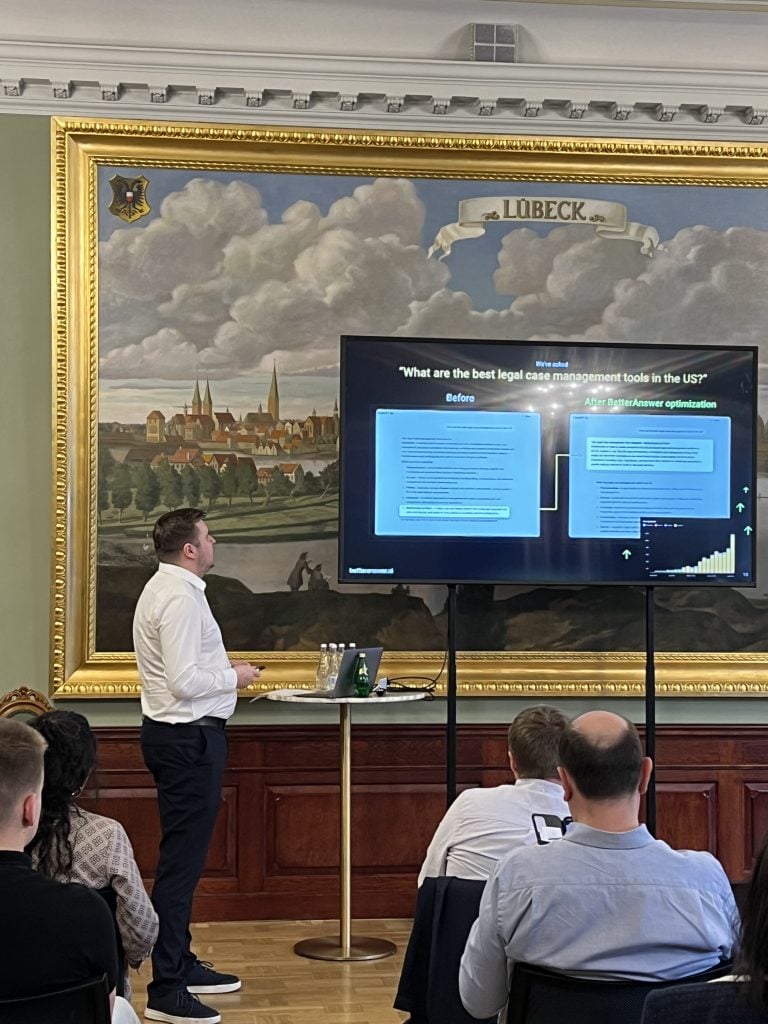
AEO focuses on helping your brand show up inside AI-generated responses by aligning your content with how these systems gather and deliver information. Artyom laid out a practical 4-step framework for AEO:
- Know your position
Use tools like AnswerRank to find out if and how your brand appears in AI-generated answers. Identify which queries, topics, and content formats are favored.
- Make your site AI-ready
Structure your content clearly, with headers, FAQs, internal links, concise snippets (40–60 words), and schema markup. Create pages like “Top questions about [your product]” or detailed comparisons.
- Enhance your presence beyond your site
AI tools rely heavily on third-party signals. Building up brand mentions, positive reviews, and being referenced in trusted sources all contribute to better AI visibility.
- Maintain your position
AEO requires ongoing refinement, monitoring where you appear, and adapting when Google or OpenAI updates their models.
🚀 Quick takeaway
If you’re not actively shaping how AI sees your brand, someone else is. Answer engine optimization helps you take control of your brand’s presence across the AI-powered web.
AI-generated results reflect how your brand lives on the broader web, and AEO is your way of creating that perception.
AI use cases from our clients
Glebs presented a hands-on showcase of how scandiweb clients are already using AI. The use cases can be structured in three levels of adoption, each representing a deeper integration of AI into everyday work.
Level 1: out-of-the-box tools
These are plug-and-play AI solutions that improve productivity without requiring major system changes, for example:
- A custom GPT-based advisory board, simulating decision-making styles of leaders like Elon Musk and Warren Buffett
- Generating marketing assets, like product visuals and campaign ideas, using reference images and prompt-based tools
- Automating recurring content tasks, such as structuring lessons or content calendars for marketing leads.
Level 2: context-aware tools
These tools go a step further by using company-specific context to deliver more relevant output:
- Feeding transcripts from meetings and sales calls into AI to turn them into actionable insights
- Building concierge-style AI assistants that recommend products based on customer profiles and preferences
- Internal AI planners for project scoping, helping teams go from idea to structured action plan in minutes.
🚀 Quick takeaway
The best AI projects start with a business problem. When AI becomes the best way to solve it, that’s when the magic happens.
Level 3: connecting & automating with agents
Here, AI stops being a helper and starts acting as infrastructure. Think multi-agent systems that:
- Monitor SEO trends and auto-generate blog posts
- Act as internal procurement assistants, reading and analyzing offers
- Automate internal workflows across tools like Notion, n8n, and Claude, turning fragmented processes into smooth, AI-powered operations.
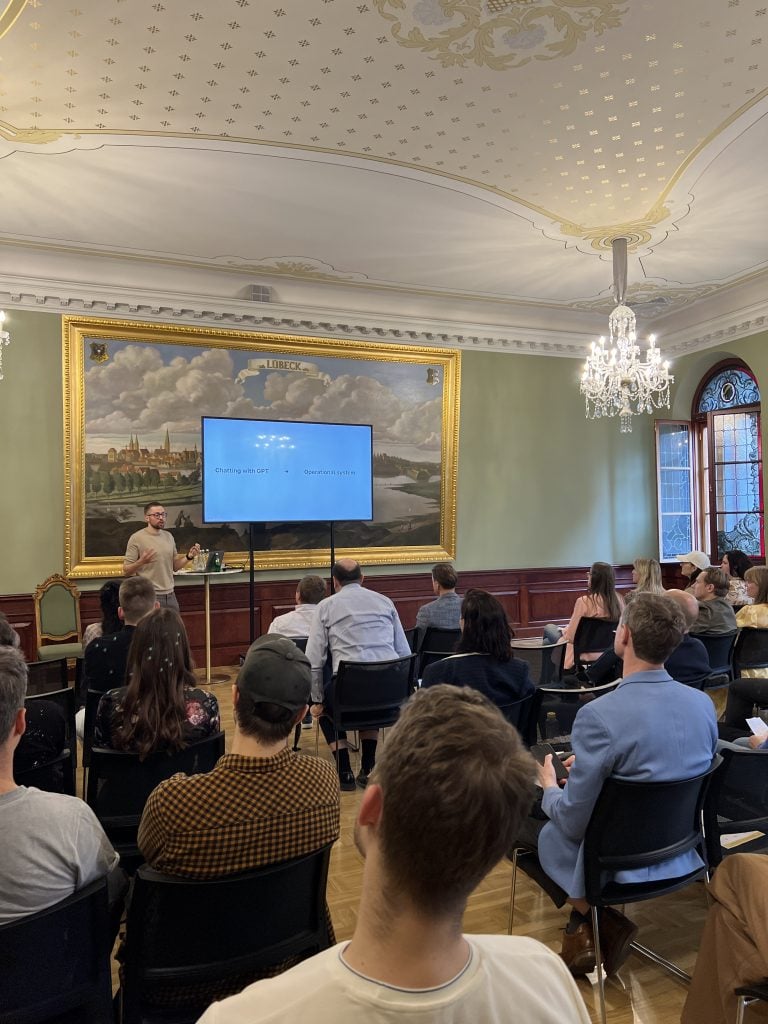
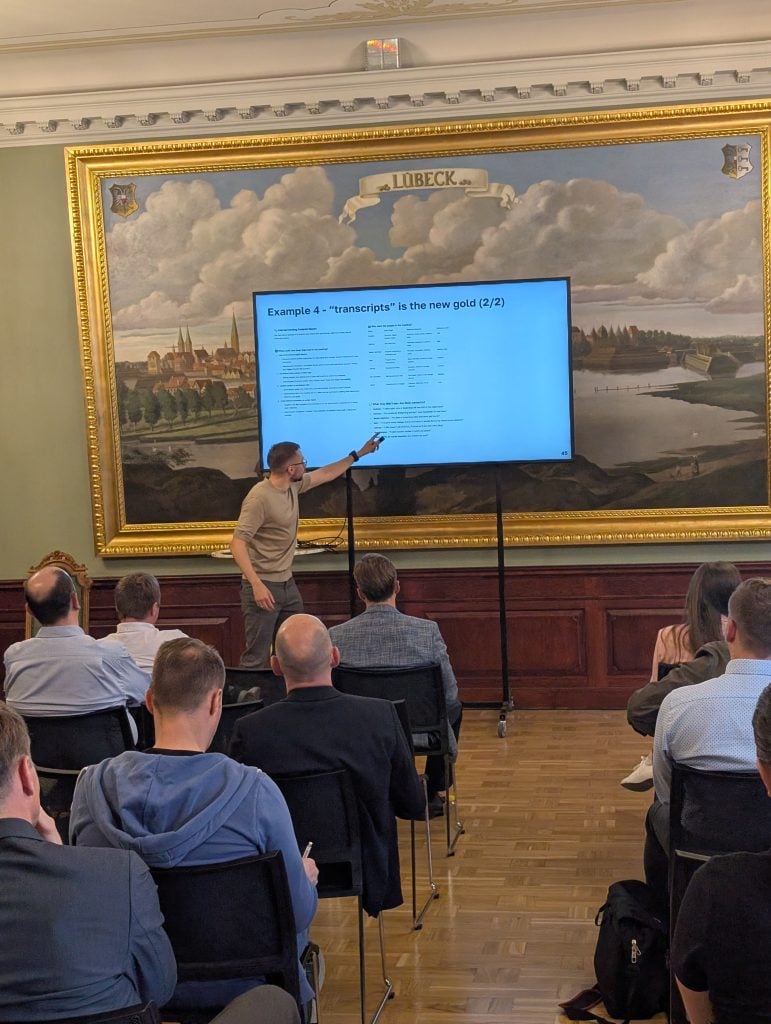
The common thread is that none of these projects started as AI initiatives. They started with a business need, and AI happened to be the best way to solve it.
Q&A: How Samsung reinvented live shopping with AI avatars
One of the standout moments of the event was the fireside chat between Boriss Sadrins (Samsung) and Maris Skujins (scandiweb), where they discussed how Samsung tackled a growing challenge in their strategy: live shopping at scale.
Traditional live shopping campaigns required large production teams, hired talent, multiple weeks of prep, and significant costs. They were engaging but not scalable across markets or frequent product launches.
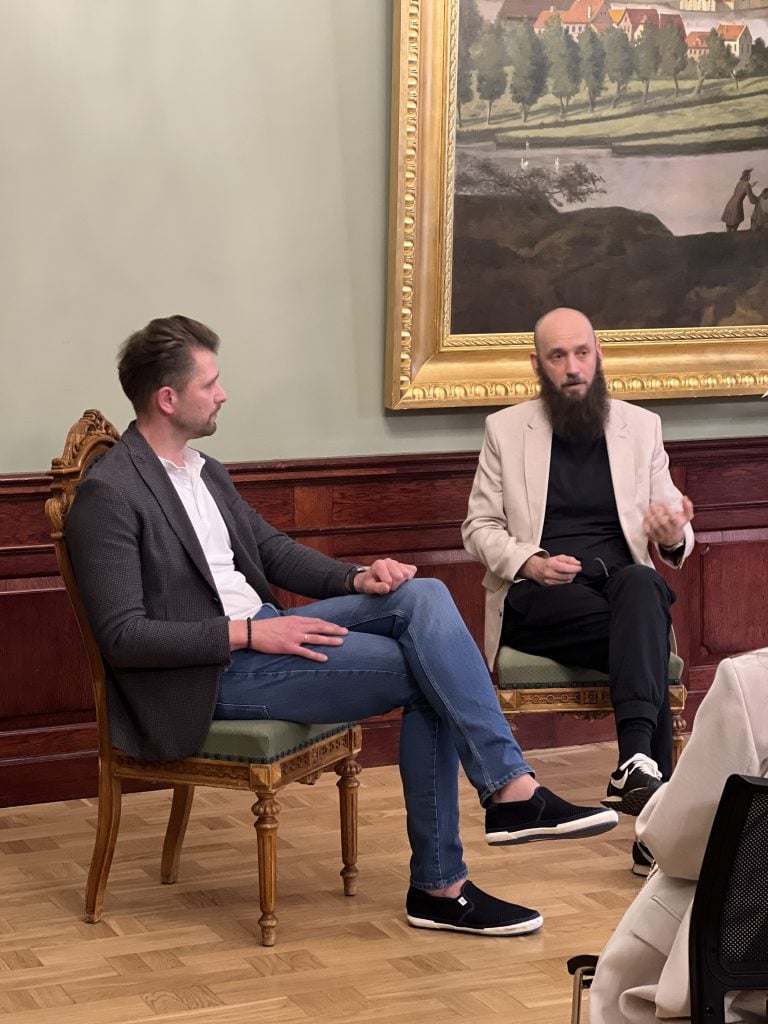
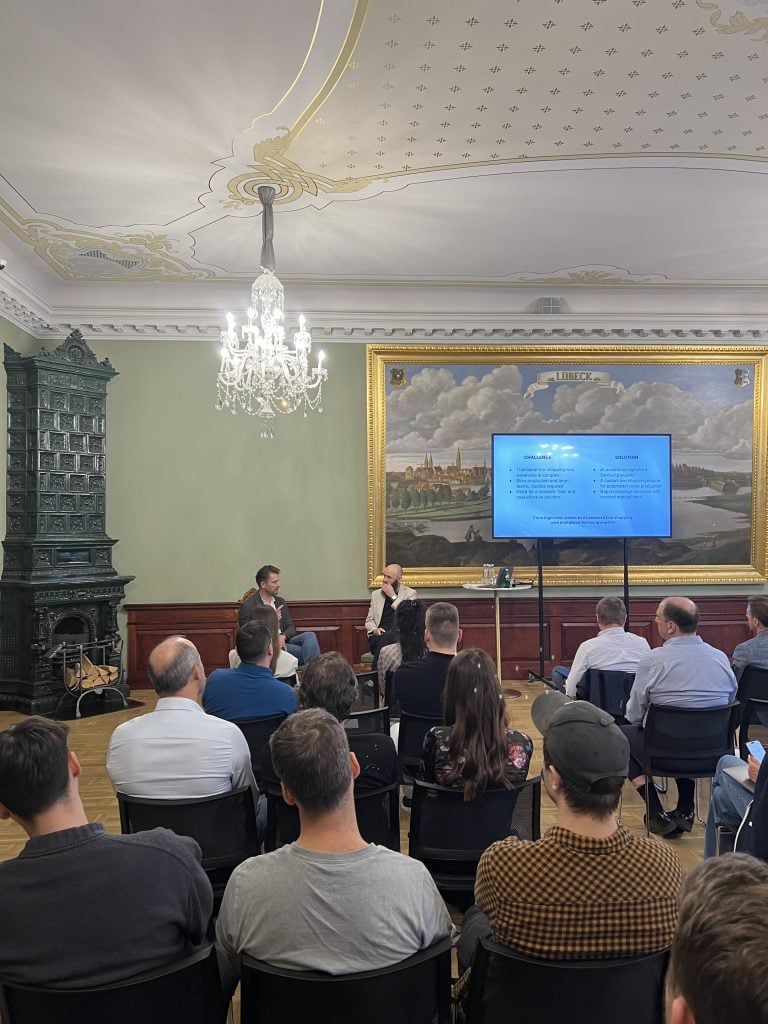
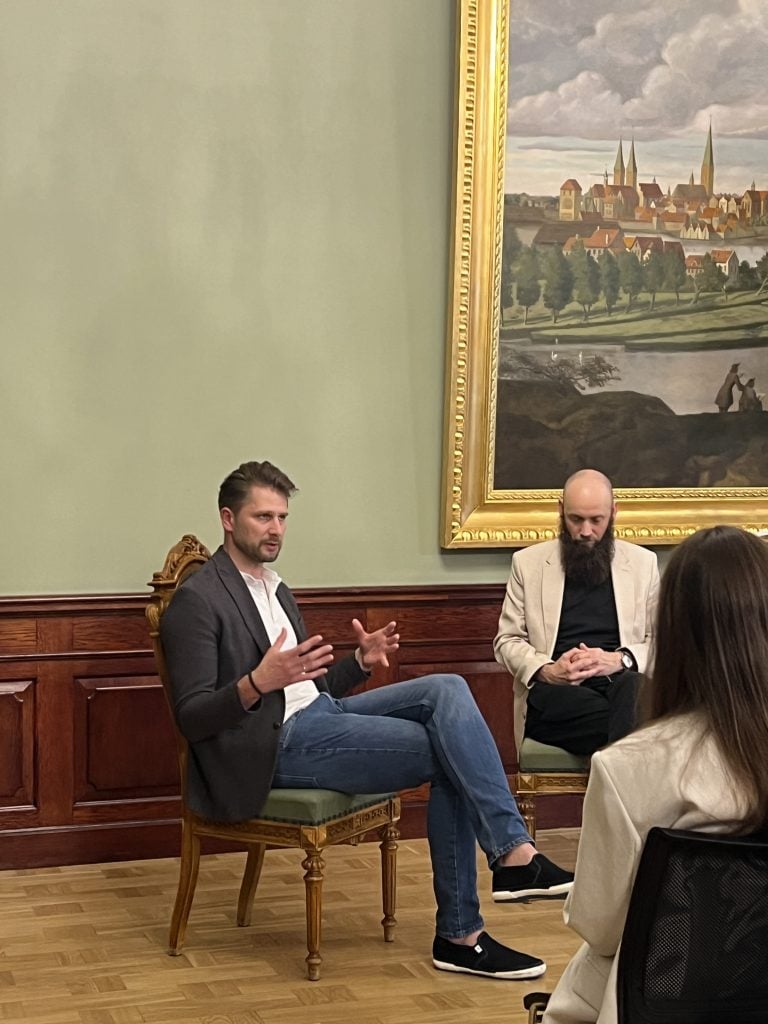
scandiweb introduced a solution using AI avatars—digital versions of Samsung experts who could speak multiple languages, deliver product presentations, and scale instantly across campaigns. The avatars were paired with a custom-built live shopping engine capable of generating scripts and videos quickly without any physical production.
As a result:
- Campaigns that once took weeks could now launch in days or even hours
- Significant cost savings without compromising quality
- Flexibility to adapt to different products and audiences with no added production work
- The approach is not limited to B2C—Samsung has already applied the same system to B2B campaigns.
AI in Estonia: practical use cases across industries
To round out the day, Nikolay Sekachev, founder of NeuroSchool, gave the audience a look into how Estonian companies integrate AI into their daily operations.
Instead of big, high-risk overhauls, many Estonian teams are embracing small, targeted implementations that deliver fast results. Some standout examples include:
- AI-powered research agents using tools like Gemini to run deep competitive analysis, scan legal documents, and generate content in multiple formats: infographics, web pages, even quizzes
- Automating repetitive tasks like invoice reading, form filling, and report generation cuts hours of manual work down to minutes
- Data enrichment for eCommerce, linking product records with real-time supplier data to create better listings and reduce mismatches
- Vision-based diagnostics, including tools that analyze facial or skin images to provide feedback in medical, wellness, or education contexts
- Voice-powered assistants built to help with schoolwork or even car buying
What makes these examples compelling is their variety and how attainable they feel. No giant AI departments or multi-year transformation projects; just sharp use of the available tools, guided by real business needs.
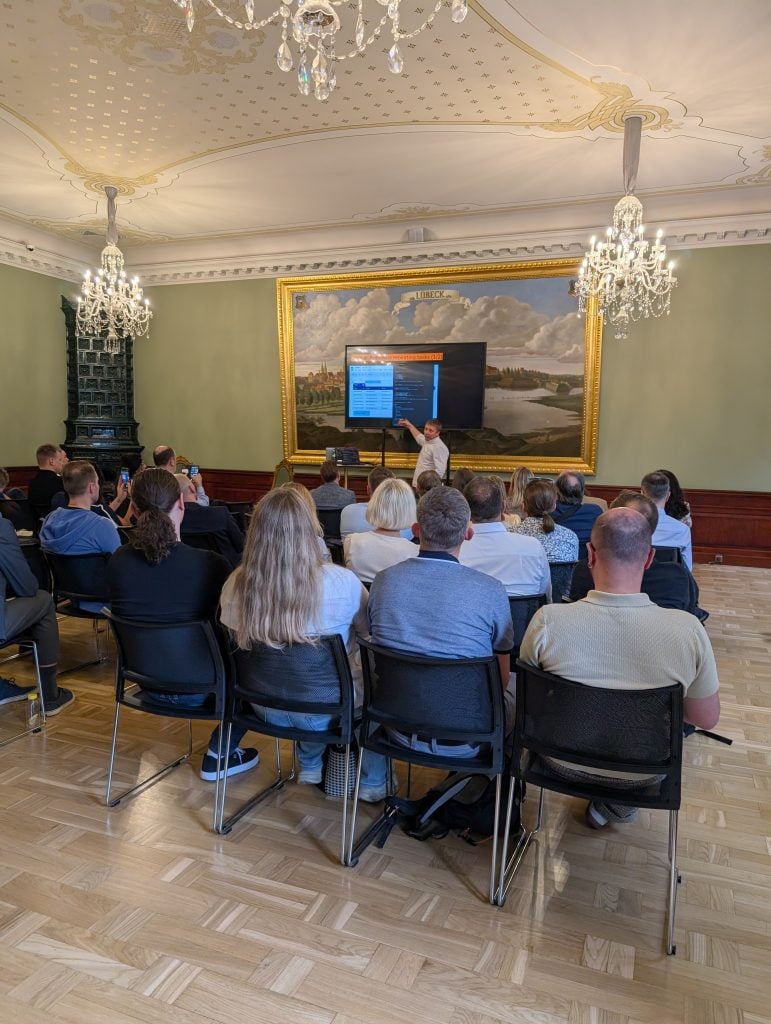
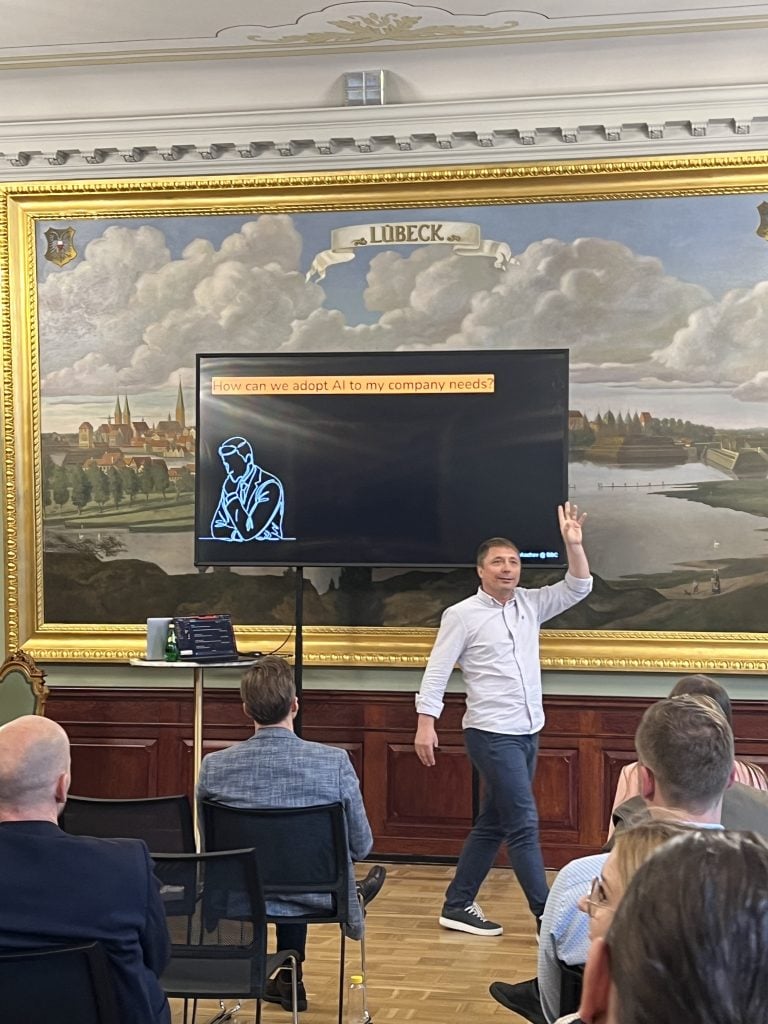
Closing thoughts
AI has already changed how businesses solve problems, create content, interact with customers, and make decisions. Global brands like Samsung and agile teams in the Baltics and beyond are moving forward—sometimes with big leaps, often with small, smart steps. The shift is underway, whether through plug-and-play tools, contextual assistants, or fully automated agents.
There’s no one-size-fits-all path, but all businesses are learning that real value comes not from using AI to speed up old workflows but from rethinking them entirely.
At scandiweb, we’re continuing to explore what this means for eCommerce and are excited to help others do the same.
If you’re ready to build something AI-first or just want to discuss the possibilities, we’re here. Send us a message, and let’s come up with something great together!
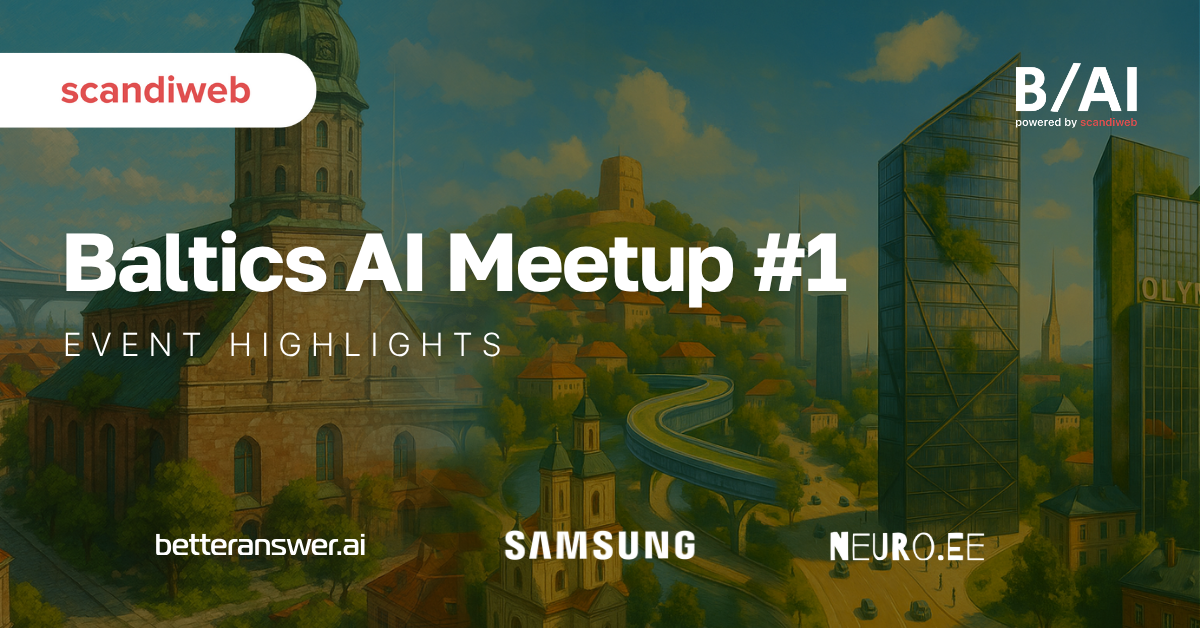

Share on: